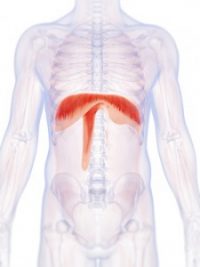
Over the past few weeks, a new trend has developed online, primarily through social media. People are dumping buckets of ice water on their heads to support ALS patients and ALS research.
If you’re not familiar with the trend, it involves people being challenged to donate $100 towards ALS research, or dump a bucket of freezing cold ice water over their heads (which is usually accompanied by a $10-$20 donation). Afterwards, that individual challenges 3 others to do the same – donate $100 or dump a bucket of ice water on their own heads. This has reached everyday people and celebrities alike. Below is Facebook Founder, Mark Zuckerberg, taking the challenge:
THE EFFECT ON ALS RESEARCH
So, has this actually helped? According to Time Magazine, the challenge is responsible for $5.5 million dollars in donations to the ALS foundation as of mid-August, over 170 times the amount donated during the same period last year. ALS is also significantly in the news and social media, meaning more people are becoming aware of the disease. This type of attention often leads to a long-term increase in donations, as well as extended research. Donations are expected to continue to climb significantly as the campaign spreads further.
Beyond the research, there has been another effect of the ice bucket challenge. ALS patients are shown that they are not forgotten, cared about, and being fought for. Many have openly shared that the attention has really helped to lift their spirits, and they are appreciative of the support. As silly as dumping ice water on your head may sound, it has truly helped to unite people in support.
Seventy-five years after ALS first gained notoriety with Lou Gehrig’s ALS Announcement, there has unfortunately still been no cure found, and progress has been slow. Some treatment options are available to help those who are suffering from the disease live with a higher quality of life and relieve symptoms of the condition. Researchers are optimistic that the new attention and significant increase in donations can help them make more progress in understanding and fighting the disease.
There have been no campaigns to date that have created this much attention and support for ALS treatment, and most believe that the campaign has been a rousing success. As word continues to spread and donations continue to come in, we all hope that we are one step closer to a cure.
BREATHING ASSISTANCE FOR ALS FROM AVERY BIOMEDICAL
While there is still no known cure for ALS, the need for mechanical ventilation may be delayed with the Avery Diaphragm Pacing System. The Diaphragm Pacing System provides breathing assistance for many ALS patients, typically resulting in fewer infections, and is preferred by many patients due to increased quality of life.
THE AVERY DIAPHRAGM PACING SYSTEM SYSTEM
The Avery Diaphragm Pacing System System is the only diaphragm-pacing device with full pre-market approval from the USFDA for adult and pediatric use and CE marking privileges under the European Active Implantable Medical Device Directive. In addition, its system of using small implanted radiofrequency receivers rather than electrode wires that pass directly through the skin may decrease a patient’s risk of infection and ongoing wound care management issues.
Avery has been commercially distributing diaphragm pacing systems since the early 1970’s. Since then, more than 2,000 patients have been implanted in over 40 countries establishing an unsurpassed record of safety and reliability.



